Minimalist interiors are celebrated for their clean lines, neutral palettes, and uncluttered aesthetic. However, without proper attention to texture, these spaces can sometimes feel stark or uninviting. Incorporating soft textures is the key to adding warmth, depth, and personality to a minimalist home without compromising its simplicity.
When I transitioned my living room to a minimalist style, it initially felt a little cold. That’s when I discovered the transformative power of soft textures. A woven throw, a plush rug, and linen curtains turned the space into a cozy retreat while keeping it sleek and minimalist.
In this guide, I’ll show you how to layer soft textures into your minimalist interiors for a balanced, inviting look.
Why Texture Matters in Minimalism
Benefits of Soft Textures
- Adds Warmth: Soft materials counterbalance the coolness of minimalist designs.
- Creates Depth: Layers of texture prevent the space from feeling flat or one-dimensional.
- Enhances Comfort: Plush rugs, throws, and cushions make minimalist spaces cozy and inviting.
- Maintains Simplicity: Texture adds interest without introducing clutter or bold patterns.
1. Layer Rugs for Comfort
A well-chosen rug anchors a minimalist space while adding softness underfoot.
How to Choose Rugs
- Opt for natural materials like wool, jute, or cotton for a subtle, organic look.
- Stick to neutral tones or muted patterns that blend seamlessly with the room.
- Choose a high-pile or shag rug for living rooms and bedrooms to add a plush, luxurious feel.
Example:
A light beige wool rug under a mid-century modern sofa creates warmth and visual balance in a minimalist living room.
2. Add Throw Pillows and Blankets
Soft furnishings like pillows and blankets bring comfort and texture to minimalist interiors.
How to Use Them
- Use throw pillows in muted colors or simple geometric designs.
- Add a chunky knit or woven throw blanket for a tactile, cozy vibe.
- Stick to a cohesive palette—blend whites, creams, or earthy tones.
Styling Tip:
Limit the number of pillows and blankets to avoid clutter—three to five pieces are enough for most seating areas.
Picture Gallery
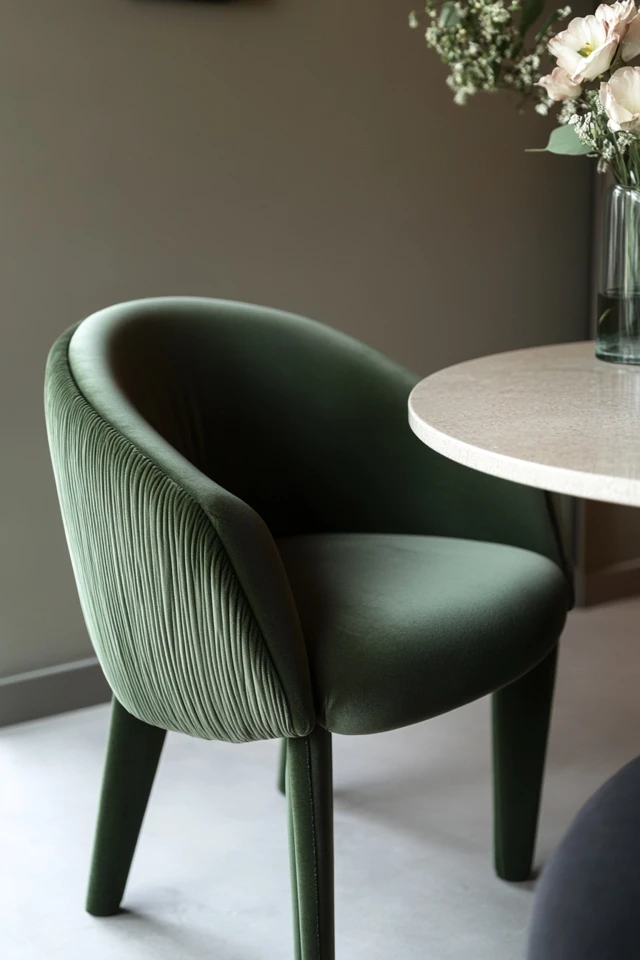



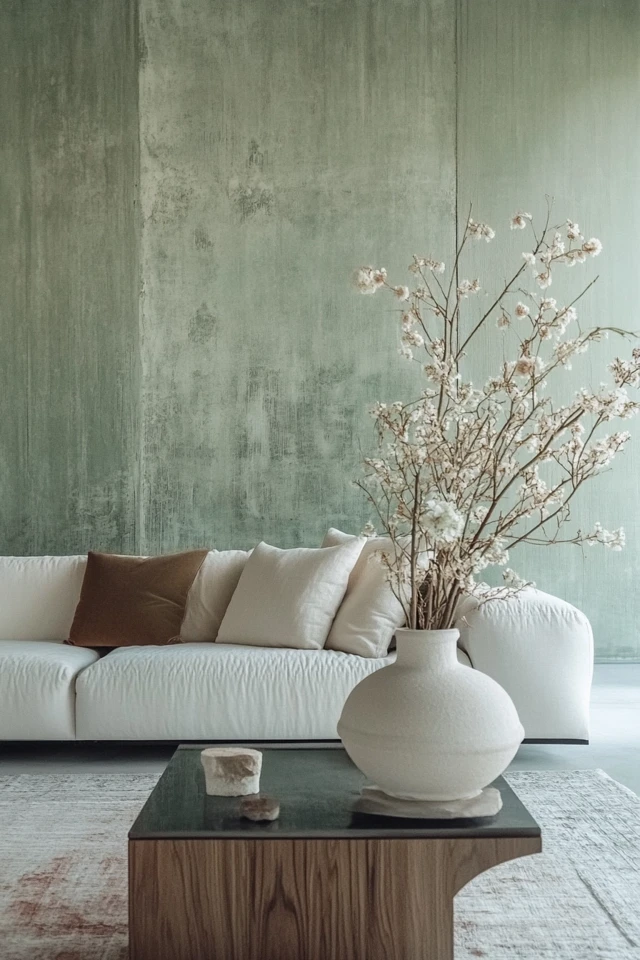
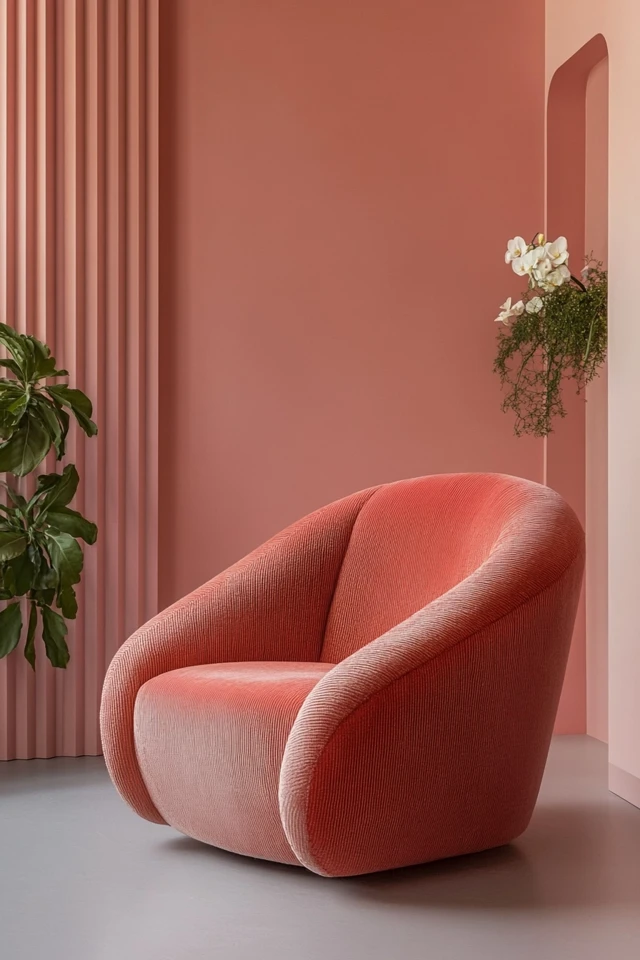
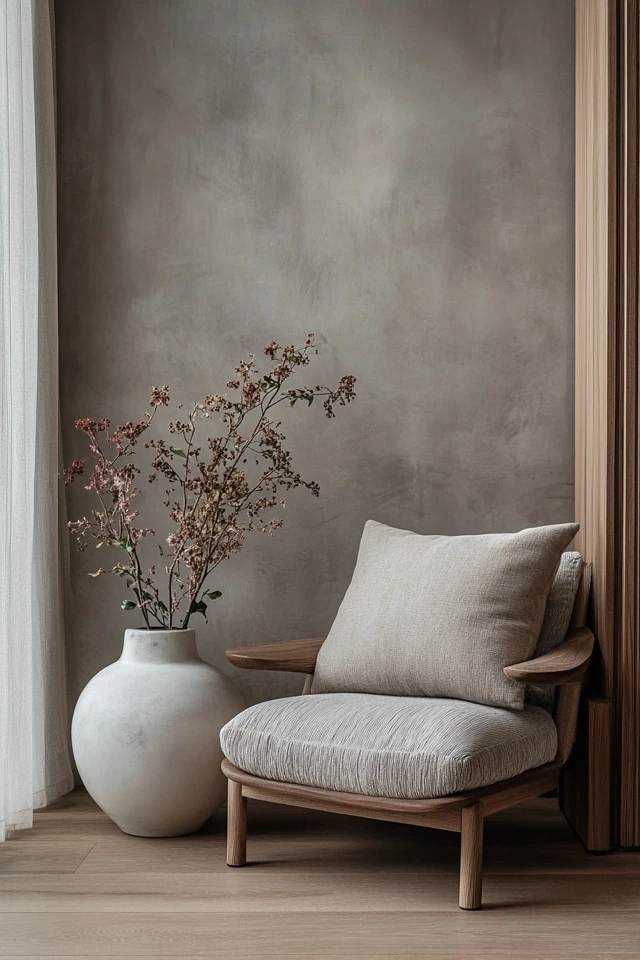
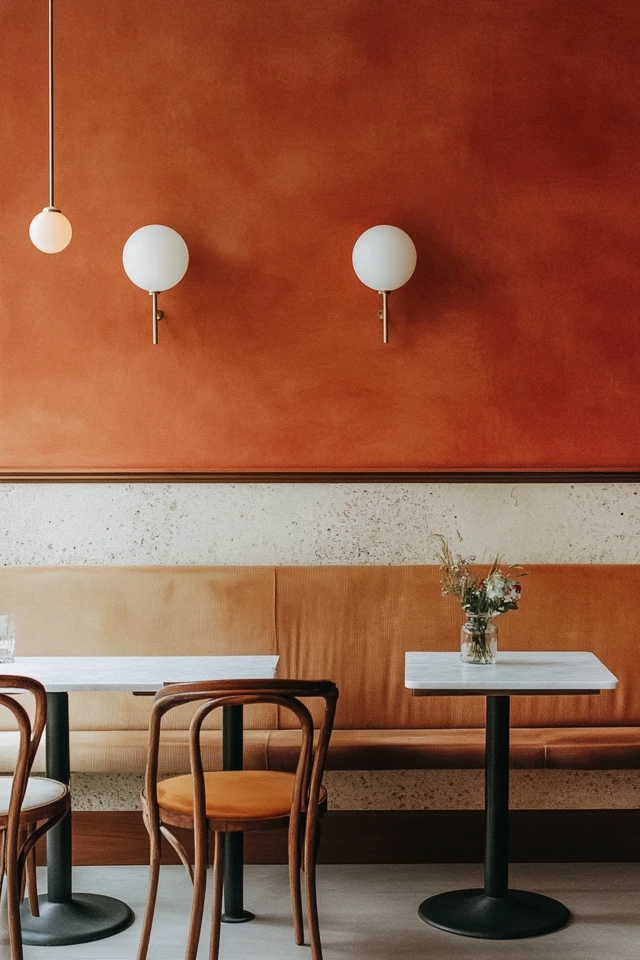
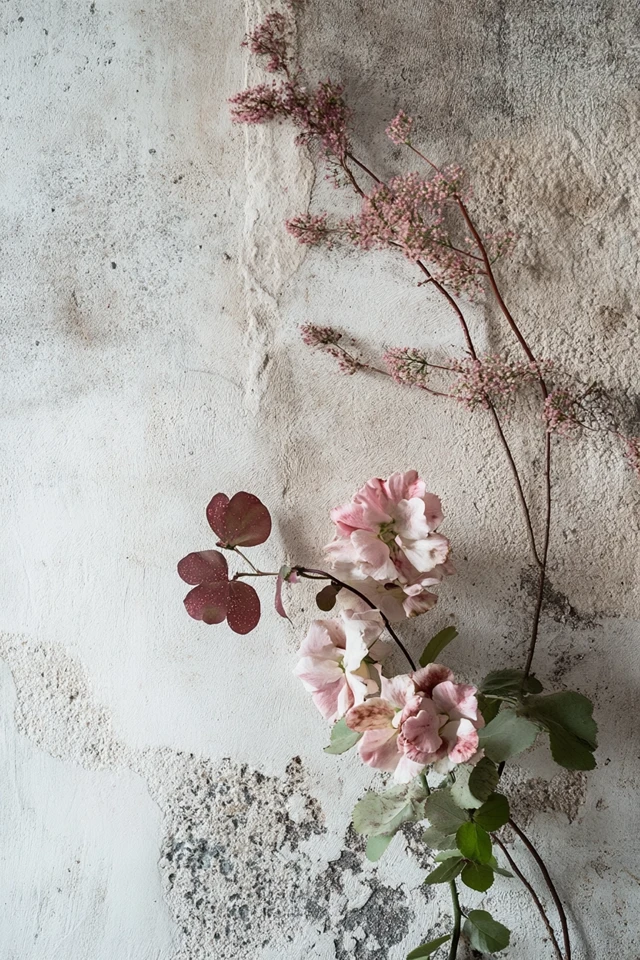
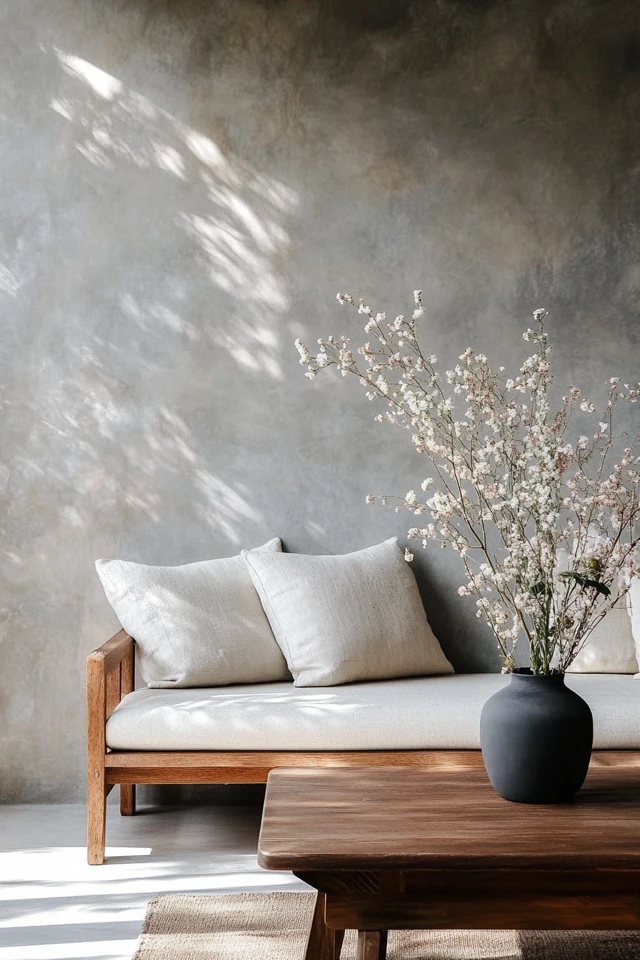
3. Incorporate Textured Fabrics
Textiles like curtains, upholstery, and bedding can add subtle texture to minimalist spaces.
What to Choose
- Curtains: Opt for linen or sheer fabrics for a light, airy look.
- Upholstery: Choose sofas or chairs with soft, woven fabrics in neutral tones.
- Bedding: Layer a linen duvet with quilted or textured throws for added depth.
Example:
Linen curtains paired with a wool-upholstered chair in a neutral palette create an elegant, textured minimalist bedroom.
4. Use Soft Lighting
Lighting doesn’t just illuminate—it can also add a sense of warmth and softness to a minimalist space.
Lighting Ideas
- Choose fabric or paper lampshades for diffused, cozy lighting.
- Use warm-toned bulbs to soften the room’s ambiance.
- Incorporate floor lamps with textured shades or bases in natural materials like wood or rattan.
Example:
A sculptural floor lamp with a linen shade adds both light and texture to a minimalist living room.
5. Incorporate Natural Materials
Natural materials like wood, leather, and rattan introduce organic texture and warmth.
How to Use Natural Materials
- Add a woven rattan chair or ottoman to a seating area.
- Choose wooden furniture with visible grain for a raw, natural feel.
- Incorporate leather in soft, neutral tones for a touch of luxury.
Styling Tip:
Balance natural materials with clean, simple furniture to maintain the minimalist aesthetic.
6. Style with Soft Decor Accents
Decor items like cushions, poufs, and even artwork can bring texture to a minimalist space.
Ideas for Soft Decor
- Add a neutral-toned pouf in a woven or knitted texture to a corner.
- Incorporate soft, fabric-covered storage baskets for functional texture.
- Use a large, neutral-colored tapestry as wall art for an understated yet impactful look.
Example:
A fabric ottoman in soft gray placed next to a minimalist armchair adds texture and functionality.
7. Embrace Textured Wall Finishes
Subtle wall textures can add depth to a minimalist space without overwhelming it.
Wall Ideas
- Use limewash or matte plaster finishes for a soft, natural texture.
- Add shiplap or paneling painted in white or muted tones for visual interest.
- Incorporate fabric wall hangings for a softer, tactile accent.
Styling Tip:
Keep wall textures understated and neutral to blend seamlessly with minimalist decor.
8. Bring in Greenery
Plants add a fresh, organic texture to minimalist interiors while improving air quality and bringing life to the space.
Best Plants for Texture
- Fiddle-Leaf Fig: Adds height and dramatic leaves.
- Snake Plant: Sleek and sculptural, perfect for corners.
- Pothos: Cascading vines add softness to shelving or tabletops.
Example:
A small potted fern on a coffee table softens a minimalist living room and adds a natural touch.
How to Maintain a Textured Minimalist Look
- Keep the Palette Simple: Stick to neutral colors to ensure textures don’t overwhelm the design.
- Focus on Quality Over Quantity: A few well-chosen pieces will have more impact than many.
- Layer Strategically: Combine different textures—like linen, wool, and wood—to create depth without clutter.
- Edit Regularly: Remove items that feel excessive to maintain a clean, minimalist aesthetic.
Conclusion
Incorporating soft textures into minimalist interiors transforms them from stark to warm, creating spaces that feel as inviting as they look. From plush rugs to linen curtains, every layer of texture adds depth and comfort while staying true to the principles of simplicity.
For me, adding soft textures was the missing element that made my minimalist spaces feel complete. Whether it’s a cozy throw on the sofa or the gentle folds of linen curtains, these subtle touches create a home that feels balanced, intentional, and alive.
So, embrace the power of texture, and let your minimalist space become a haven of warmth and serenity.
FAQ
What are the best materials for soft textures in minimalist interiors?
Linen, wool, cotton, jute, leather, and natural wood are ideal materials for adding soft textures to minimalist spaces.
How do I balance textures without overcomplicating the space?
Stick to a neutral color palette and focus on layering a few key textures, such as a wool rug, linen curtains, and a wooden coffee table.
Can soft textures work in small minimalist spaces?
Absolutely! Choose lightweight, neutral fabrics and compact textured items like a small pouf or throw blanket to add warmth without overwhelming the space.
How do I incorporate textures without adding too much decor?
Use functional items like rugs, cushions, and curtains to bring texture while keeping the decor minimal.
What’s the easiest way to add texture to a minimalist bedroom?
Layer the bed with a textured duvet, quilted throw, and a mix of pillows in natural fabrics like linen or cotton.


